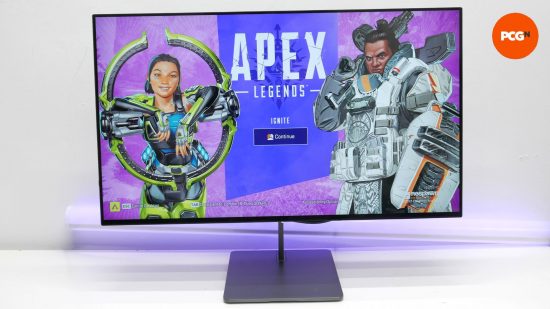Our Verdict
A top-quality 144Hz 4k gaming monitor with a stunning stand design, but a high price to match.
- Generally excellent image quality
- Surprisingly good gaming performance
- Low response time
- Expensive for the core spec
- Stand is an extra $99
- Glossy version $100 extra
The Dough Spectrum One is arguably the nicest-looking gaming monitor on the market, thanks to its super slim metal stand and otherwise clean design, but, it’s not style over substance. It also has a 4K resolution, 144Hz maximum refresh rate, a surprisingly fast response time, and some useful other features, but is it one of the best 4K gaming monitors? It won’t be a go-to option for esports enthusiasts but as an all-rounder display, it’s likely to have wide appeal.
The Dough company used to go by the name Eve, under which it launched a Kickstarter to create community-designed monitors, offering a choice of sizes, resolutions, refresh rates, and various other options. This included the option that still exists to buy the Spectrum One in either glossy or matte panel coatings and to buy the display with or without its stand.
As with so many Kickstarters, the launch didn’t exactly go to plan and this potential best gaming monitor candidate arrived late to market with a very high price. However, with a name change and new pricing, this display has the potential to be a modern classic.
Why you can trust our advice ✔ At PCGamesN, our experts spend hours testing hardware and reviewing games and VPNs. We share honest, unbiased opinions to help you buy the best. Find out how we test.
Dough Spectrum One Specs
Dough Spectrum One specs:
Dough Spectrum One design and build quality
The single most defining feature of the Dough Spectrum One – other than the buying options mentioned above – is its design. The display panel itself is largely just a neat black rectangle with a plain flat, matte black rear, no RGB lighting, and very slim bezels; it’s an all-business kind of vibe. As such, if you buy it without the stand, there’s nothing too exciting here.
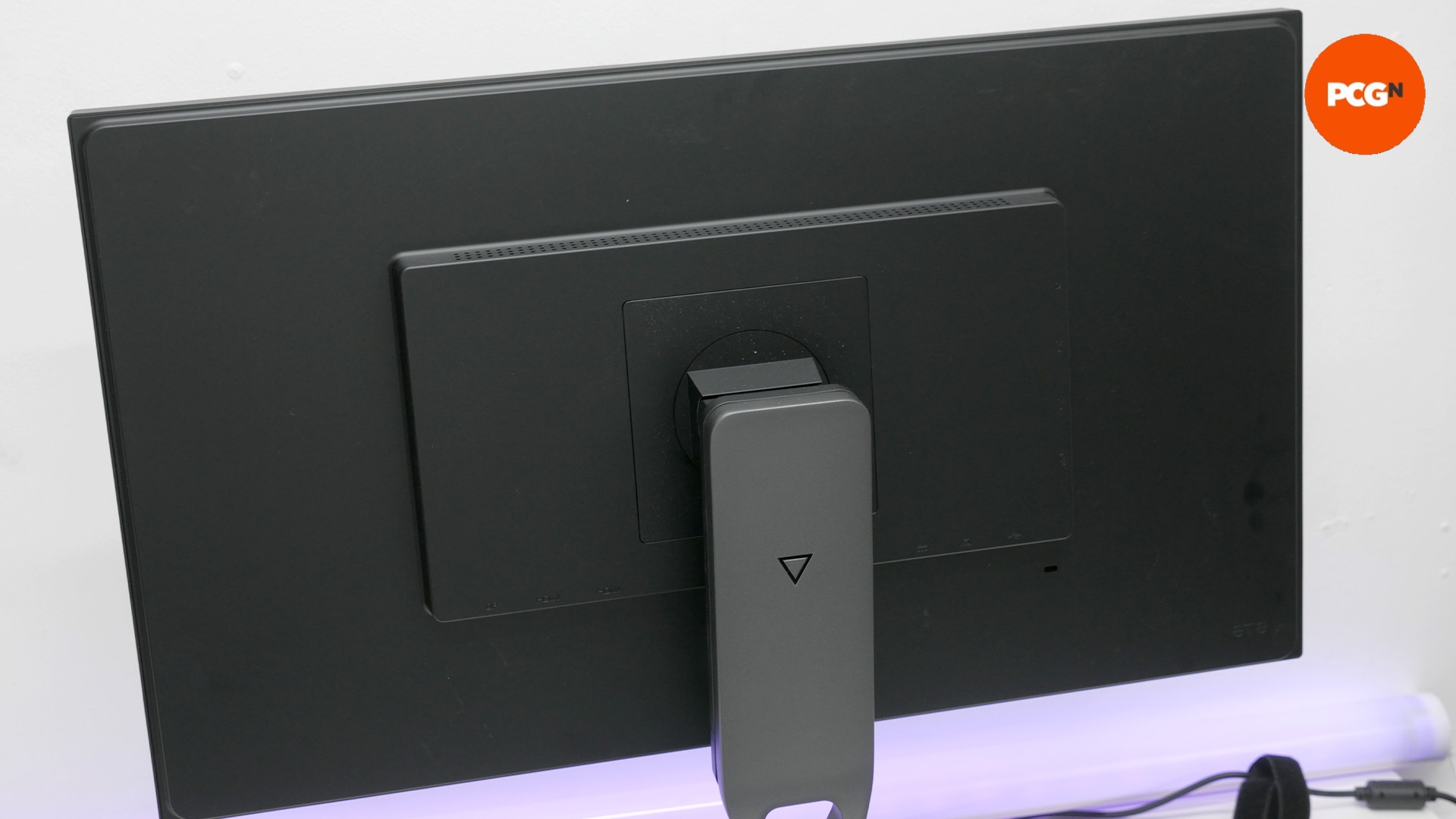
However, buy the Spectrum One with its optional $99 stand and you get easily the best-looking monitor stand on the market, in my humble opinion. It’s made of solid metal with a gunmetal paint finish that strikes just the right balance of smartness without being too dull. Moreover, it’s incredibly slim viewed from the front, measuring just 10mm wide for most of its length. From the side, you can see it’s quite a bit deeper but the overall impression is still of a materials science-defying balancing act.
The stand is also impressively stiff, exhibiting none of the wobble of some cheap stands, despite also incorporating 130mm of height adjustability, along with pivot, rotation (in both clockwise and anti-clockwise directions), and tilt adjustment. A hole under where the stand broadens to its height-adjusting section acts as the only cable-tidying addition to the stand. Be careful pivoting the screen with cables running through this hole, though – they snag easily and can wrench quite hard on the power and video sockets.
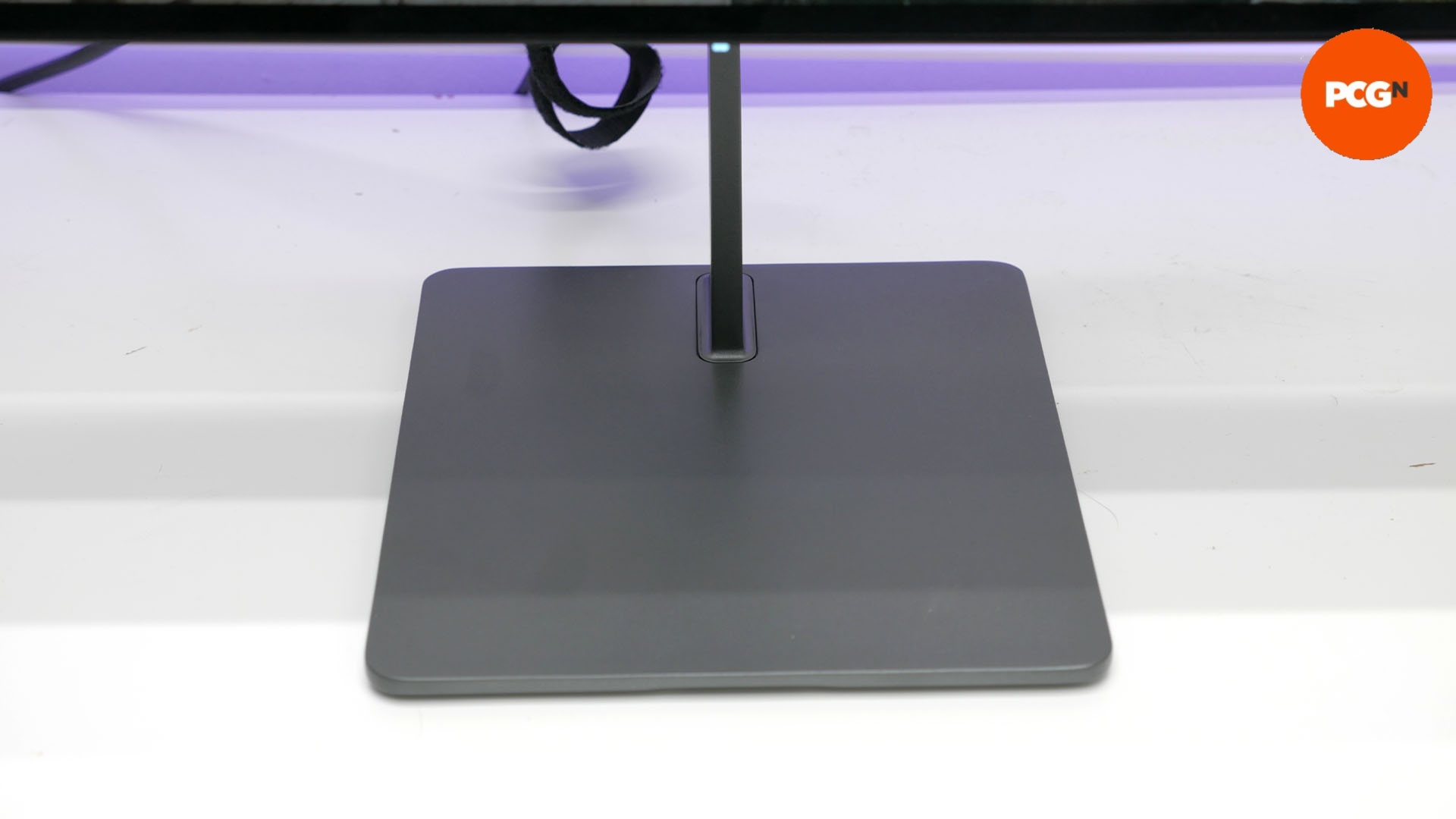
The foot of the stand is heavy and thick, and its underside is completely covered with thick rubber, which provides a strong grip on your desk. What’s more, it’s not too large (200mm wide by 225mm deep), so it doesn’t take up much desk space, and the space it does occupy is still usable thanks to the flat top of the foot.
Opt to go without the stand and there’s a standard 100 x 100mm VESA mount on the back of the panel, and the screws are handily pre-installed, rather than being loose in a bag and easy to lose.
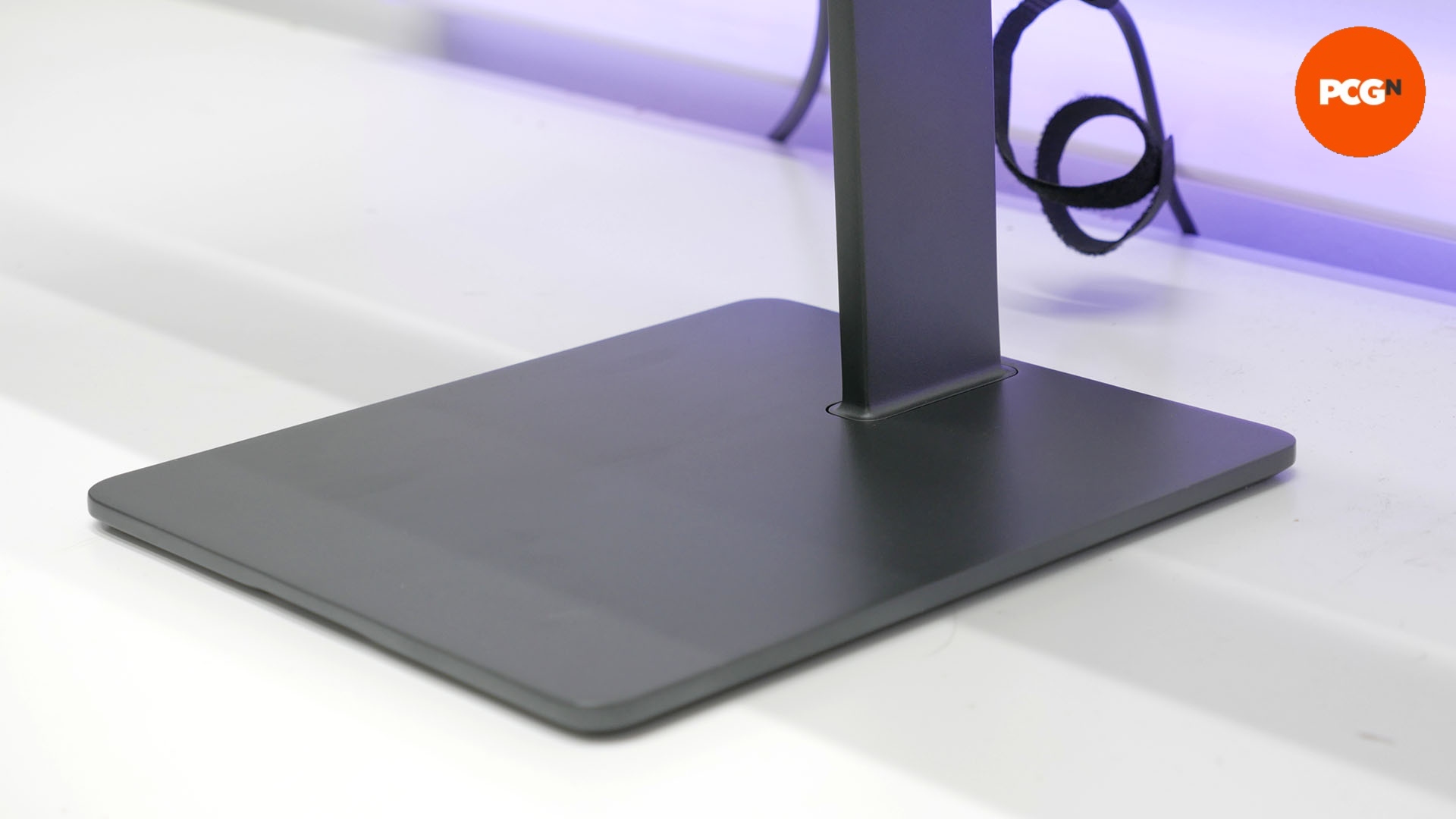
Dough Spectrum One features
The Spectrum One’s headline feature is its 27-inch, 144Hz, 4K, IPS LCD panel, which is available in either glossy or matte coatings. The choice of coatings means you can either have a finish that reduces annoying reflections, but can result in a slightly less crisp-looking image with a slight greying effect to dark colors, or you can accept reflections, but enjoy a slightly crisper image with dark colors that aren’t so washed out. I talk more about my experience with both options below in the image quality section.
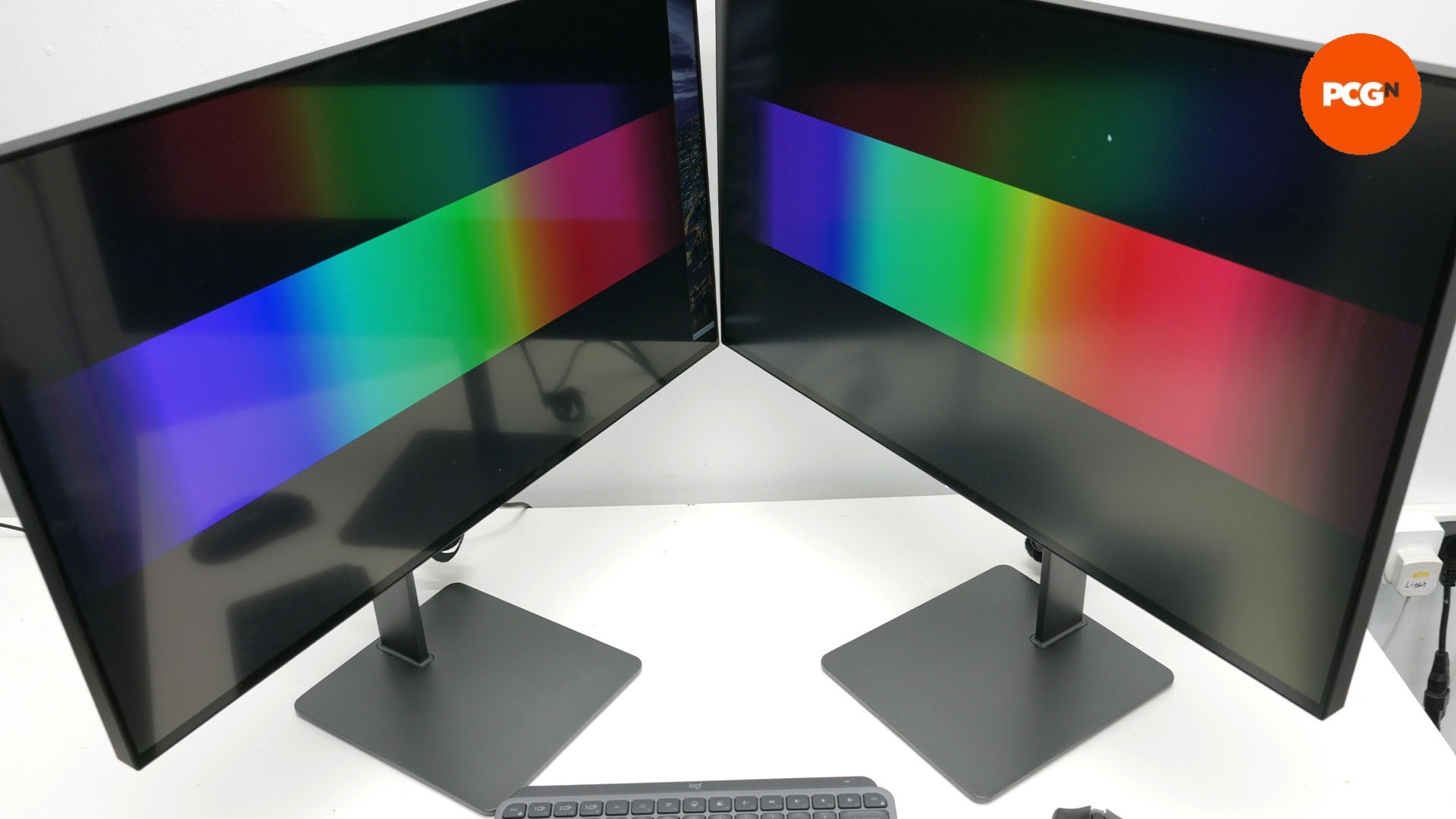
Dough used to offer more options for screen resolution and refresh rate combinations, but the One is currently only available in this 144Hz/4K configuration. The company does also offers the Spectrum Black OLED range, though, which are 240Hz 27-inch/1440p and 32-inch/4K monitors.
For features other than the screen, the Spectrum One isn’t exactly bristling. There are no built-in speakers or gaming extras, such as a pop–out headphone stand, and, as mentioned earlier, there’s no RGB lighting either. However, you do get a USB hub with two USB-A 3.1 sockets for peripherals and two USB-C inputs that also support video input.
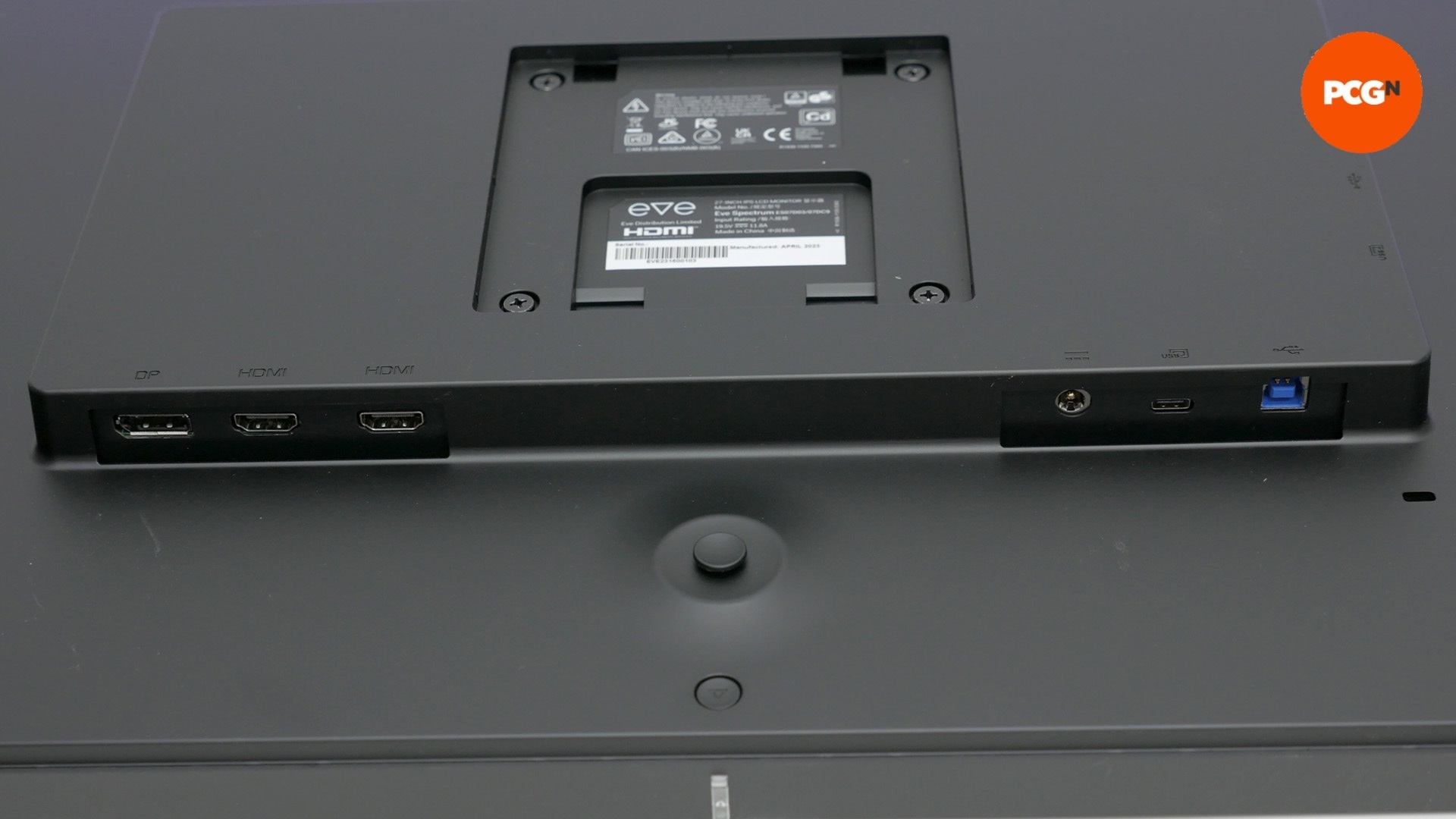
The USB-C sockets can also deliver up to 100W for device charging, so you can use a single cable for power and video for your laptop. Quite a few monitors offer this feature these days, but several only provide in the region of 30W of power, so 100W is a significant step up, allowing for quite powerful laptops to run at full pelt.
Alongside the two USB-A ports and one of the USB-C ports on the left edge of the back of the screen is a headphone jack, which allows you to pipe audio from connected video sources to your headphones. Its sound quality is clear and with a full sonic range – there’s none of the thin, crackly sound you get from some cheap monitor headphone jacks.
For other video inputs, you get one DisplayPort 1.4 connector and two HDMI 2.1 ports, so you can get the full 144Hz 4K experience of this display on all inputs, and have support for features such as variable refresh rate on consoles.
Back to the screen, this panel has a 10-bit color depth able to produce up to 96% of the DCI-P3 color space, which translates to it conforming to even the most demanding HDR color standards. It also has a DisplayHDR 600 rating, which requires the display to hit a peak brightness of 600nits as opposed to the more standard 400nits, for more dazzling moments of brightness.
However, there’s no stipulation for higher than the 1,000:1 static contrast ratio of non-HDR displays, and sure enough, that’s all you get here. You’ll want an OLED monitor or an LCD monitor with some degree of local dimming to get better contrast.
Dough Spectrum One image quality
Fire up the Spectrum one and its combination of a 27-inch screen size and 4K resolution immediately gives you that satisfying pin-sharp view that you expect from a 4K screen. Its pixel density is 163ppi, which is easily enough to ensure no single pixel is discernible from a typical 2ft viewing distance. Instead, you get a lusciously smooth image that brings a lifelike quality to video and stunning clarity to games, as well as ensuring text is wonderfully smooth-edged and easy to read.
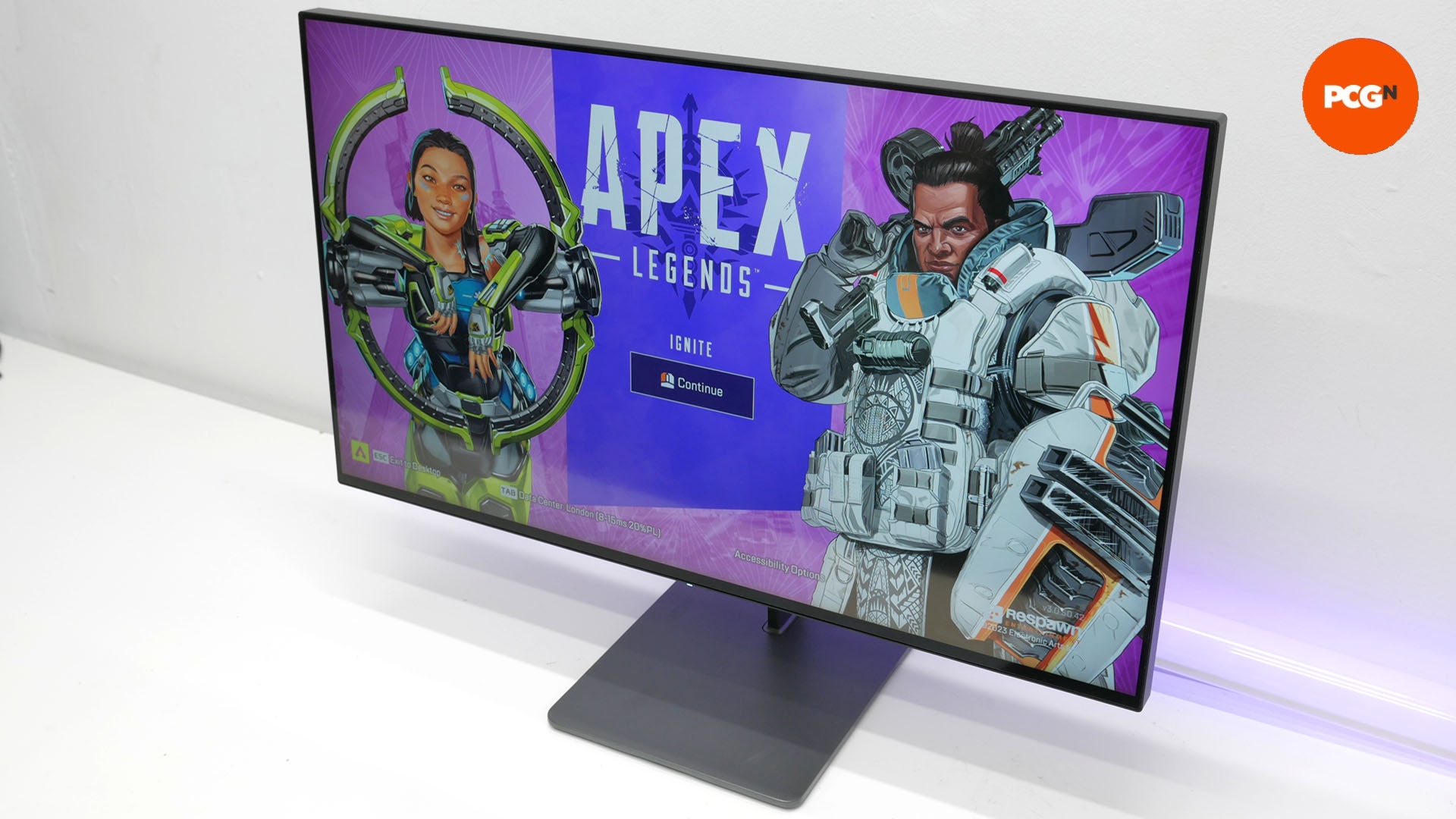
Also crucial to the generally enjoyable feeling of using this display is the use of Windows 11, as it handles resolution scaling so much better than previous versions of Windows. Using a 4K screen previously meant that if you had to run certain games at lower resolutions your whole desktop would be messed up when you exited the game. Now, though, Windows 11 handles things with ease so you can run whatever resolution you like, whenever you like, and still find your desktop is as it should be.
As an IPS LCD panel, viewing angles of both the glossy and matte versions of these screens are excellent, ensuring colors remain accurate even when viewed from extreme angles. Not only does this allow for multiple people to comfortably view a screen, or for an individual to step away from a screen without a ruined image – perhaps to sit back and watch a movie – but it also ensures there’s none of the color shimmer and contrast loss that come from some TN and VA panels when moving your head slightly. The main downside is IPS glow (the slight graying that can affect parts of the screen when viewed from an angle) but it’s no worse here than on any other IPS screen.
Talking of the glossy and matte finishes, these both conform to expectations. The glossy panel has just a touch more depth to its dark colors, more punch to its bright colors, and thus a greater perceived contrast. Plus, text is just a touch sharper, as there’s no grainy matte coating to slightly disperse the light. However, reflections are noticeable – if you’re going to be working in a bright room it won’t be ideal.
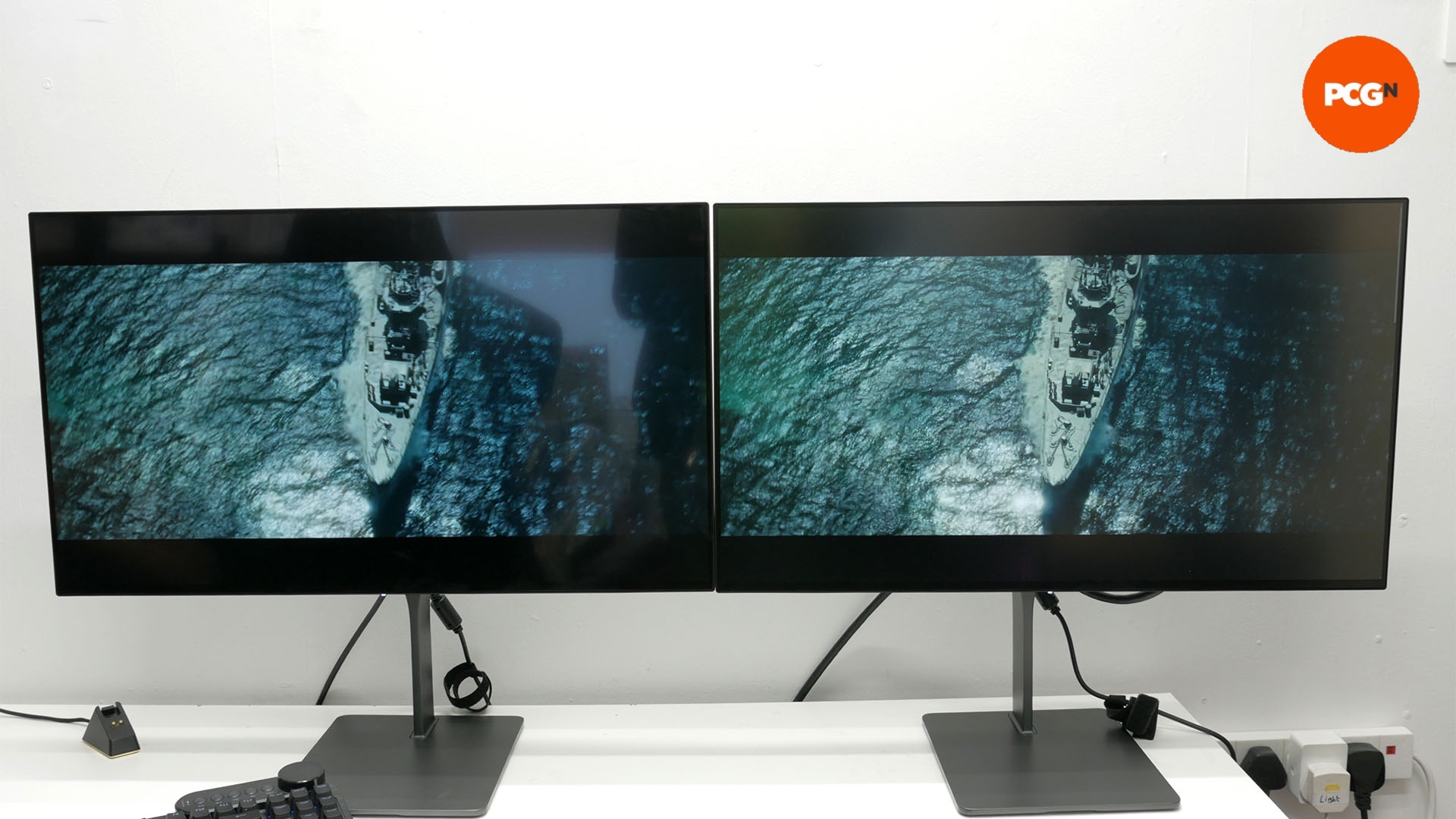
Meanwhile, the matte finish can look just a touch greyer, and less punchy, and there’s just a slight loss in clarity on fine details compared to the glossy finish. However, reflections are all but nonexistent. In short, the matte version is better for work – especially in brighter environments – and the glossy version is better for gaming and video. I found myself preferring the glossy option, though I wouldn’t pay the extra $100 it costs to get it.
Whichever screen finish you choose, the overall image quality here is excellent, with that extended 96% DCI-P3 color range (96.9% in our tests) making for bright and punchy colors, but without any of the overly lurid, almost luminous colors you get on some extended color range displays. You can also switch the display to only run in the sRGB color range (about 65% DCI-P3) if necessary.
Contrast is also good, if unexceptional for an IPS panel. We measured a level of 1,034:1 in our tests, which is in the middle of the 700-1,200:1 contrast you’ll generally get on a display of this type. That’s well below the 3,000-5,000:1 some VA panels can offer, let alone the 10,000:1 of OLED displays, but VA panels have their compromises and OLEDs are expensive!
Although to my eye this display seemed to have an accurate balance of colors, with white backgrounds looking like true white, in our tests the display recorded a color temperature of 7,087K, which is some distance from the ideal temperature of 6,500K. However, this was easy enough to balance out with the help of a colorimeter, and would only be a concern for professional image editing – it wasn’t far enough off to affect my enjoyment of the screen or use of it for editing the images in this review, for instance.
Dough Spectrum One gaming performance
In all honesty, I wasn’t expecting such an amazing performance from this display when it came to gaming. Sure, its 144Hz refresh rate and claimed 1ms gray-to-gray response time means it was always likely to be plenty smooth enough for all but esports titles, but to my amazement, this panel was surprisingly good even for competitive shooters.
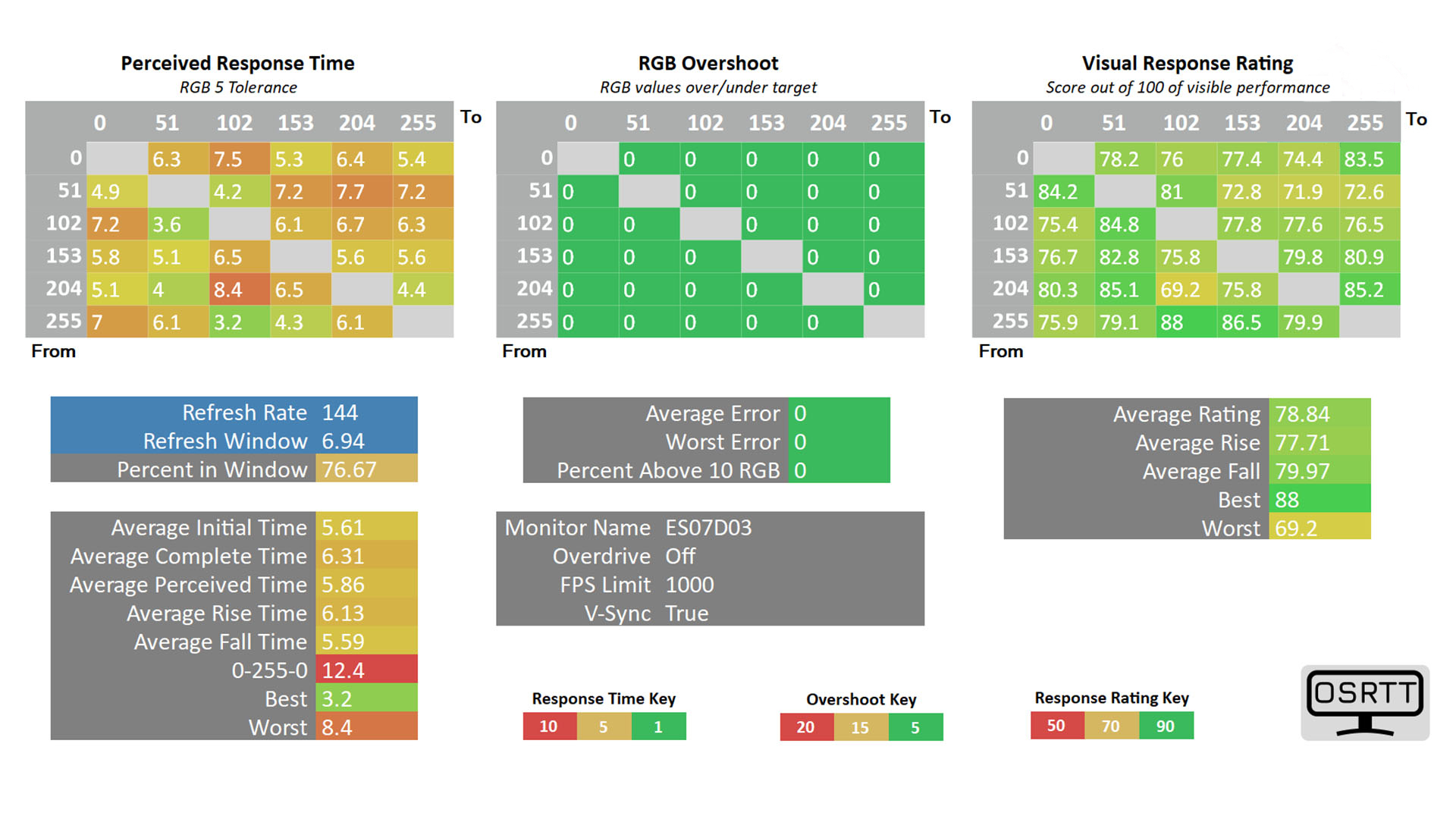
The crux of that good performance is a surprisingly fast response time. Even with overdrive completely turned off, this display still delivers an average response time of 5.61ms. Crank overdrive to high and that drops to 4.48ms with no meaningful rise in color overshoot – that weird glowing trail effect you get on some monitors. You can learn more about response time and its effects in our guide to LCD monitors.
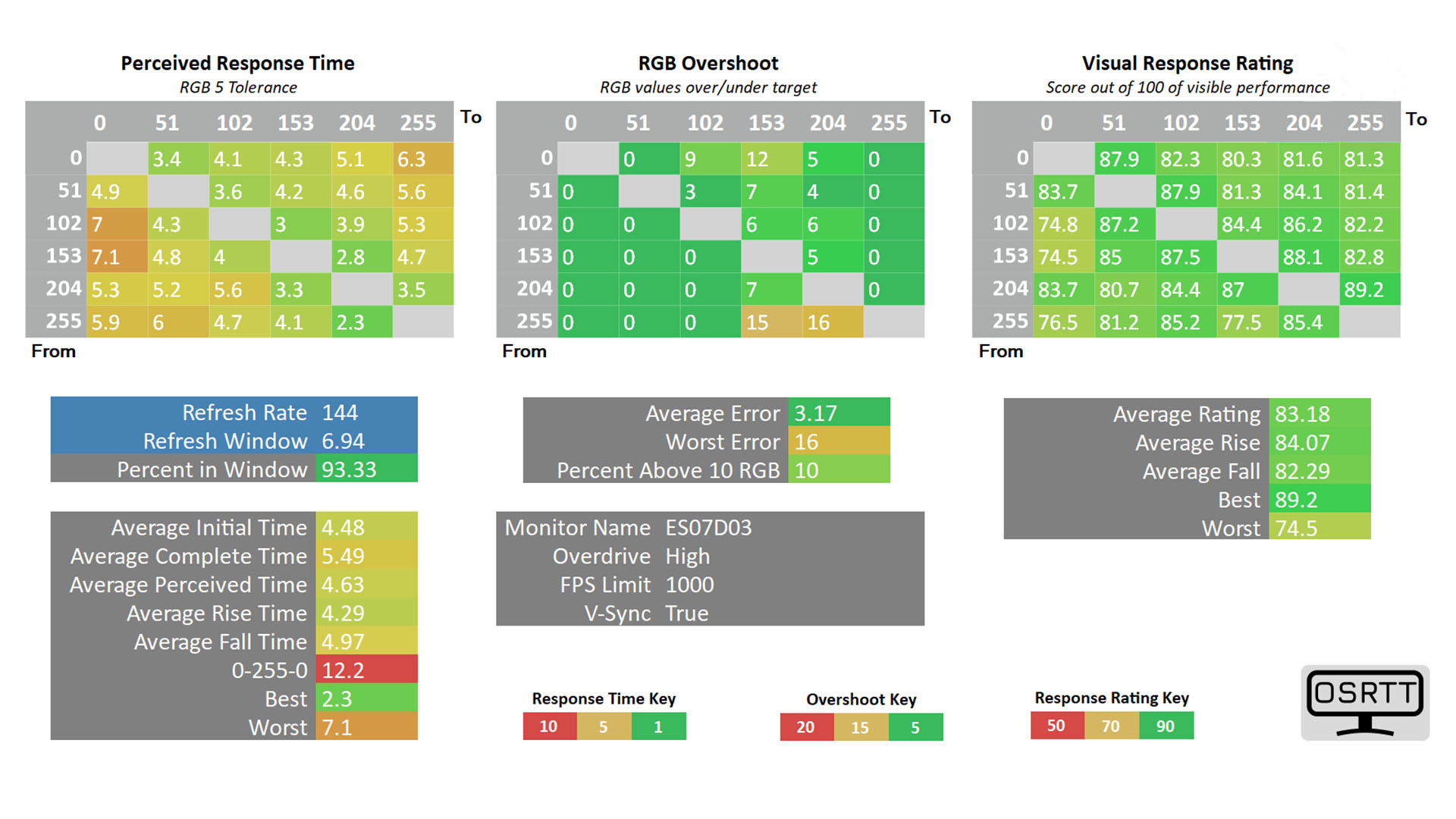
What’s more, you can even fine-tune the overdrive yourself by switching to manual mode. I turned this feature on, then set overdrive to 50/100, and the response time dropped to just 3.28ms – plus, while overshoot became noticeable, it wasn’t awful.
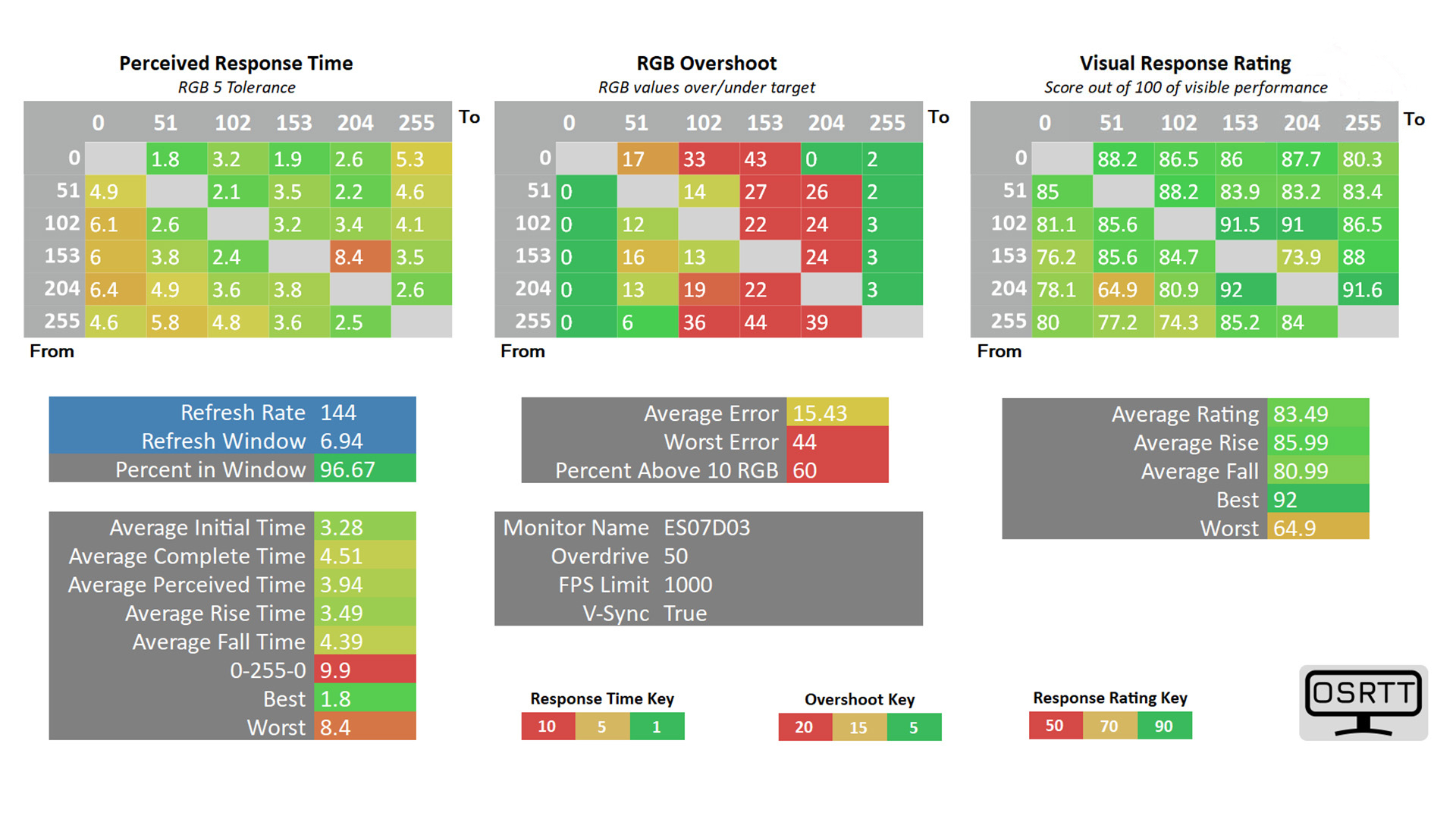
All that means that with a refresh rate of 144Hz, this monitor comfortably delivers a response time that’s fast enough to ensure it rarely shows any of the image-blurring, ghostly trails that are the tell-tale sign – and huge distraction – of a slow response time (because its average response time is less than its frame time of 1/144Hz = 6.9ms). For comparison, the Dell G2524H has a 280Hz refresh rate (for a 3.5ms frame time) but at best has a 7.5ms response time so it suffers terribly with obvious ghosting.
So, while the Spectrum One isn’t the last word in esports monitors – you’ll want to step up to 240Hz or 360Hz panels (and beyond) for that – it can more than deliver the goods for all other gaming scenarios.
Dough Spectrum One price
Price: Expect to pay $649 (matte) or $749 (glossy) and $99 for the stand.
Dough Spectrum One review conclusion
The Dough Spectrum One is a fantastic gaming monitor that would have been an absolute revelation at its current price a year or two ago when it was originally slated to be released. Even with a recent $500 drop in price, though, it’s still an expensive display. There are plenty of 4K/144Hz monitors available with a stand for under $500. So, to have to pay $748 for the equivalent spec here is a tough sell.
That said, this display genuinely is better-looking and with superior performance than most cheaper competitors. Combined with its stunning stand design, this earns it a spot on our best gaming monitor list just as a premium stylish option for those who are happy to spend the extra for the design.
For more gaming monitor recommendations, check out our best gaming monitor guide.
